Halebiduis located in Hassan district in Karnataka. Ketumalla, the chief of staff of Hoysala Kingdom, built this temple during 1121 A.D and attributed to his king, Vishnuvardhana and queen, Shantala Devi. Even then it is learnt that it took 105 years to complete. If one stands on the platform of the temple and sees around he will see the hills opposite and two big bulls facing the temple and Ganeshafigure on the south.

Halebiduis located in Hassan district in Karnataka. Ketumalla, the chief of staff of Hoysala Kingdom, built this temple during 1121 A.D and attributed to his king, Vishnuvardhana and queen, Shantala Devi. Even then it is learnt that it took 105 years to complete. If one stands on the platform of the temple and sees around he will see the hills opposite and two big bulls facing the temple and Ganeshafigure on the south.
It is believed that Queen Shantala Devi, was an epitome of beauty and fashion, she was also a great Bharatnatyam dancer and musician. Sculptors were inspired by this and the Shilabalikas, the dancing figures, are models of Queen Shantala Devi and her courtisans. History of Hoysalas mentions Shantala Devi had great influence in the adminstration and religious reforms during Vishnuvardhana reign. She was follower of Jainism and the King follower of Sri Vaishnaism and was influenced by Saint Ramanuja Charya.
In the 14th century, this glorious city fell into ruins with the invasion of Malik Kafur, Mughuls, from the North India. This place was ran-sacked and plundered repeatedly rendering it in ruins. Hence its name Haledid, meaning ” City in Ruins”.
Hoysaleswara Temple in Halebidu
Monolithic soapstone or Chloritic Schist was used for the construction of these temples.The God on the northern side temple is called as Shanthaleshwara and that on southern side is called as Hoysaleshwara.
The walls of the temple are covered with an endless depictions from Hindu mythology, animals, birds and Shilabalikas. Yet no two postures of the sculptures are similar.
Shantaleswara Temple in Halebid
Built after Shantala Devi, queen of king Vishnuvardhana. The Shantaleswara temple on the northern side stands on a platform like a casket in shining black soft stone – chlorite schist covered with variety of gods and goddesses, animals, birds and dancing girls. The temple took 190 years to build requiring skills of more than 20,000 laborers.
It has a Museum on the lawns that showcases 12th century sculptures and gold coins in use at the time. One km from Halebid is Basti hill with Jain bastis with gleaming black stone pillars.
At a distance of 17 km from Belur, 32 km from Hassan, 34 km from Chikmagalur, 148 km from Mysore, & 211 km from Bangalore, Halebidu is located in the Hassan district of Karnataka. It is one of the most popular tourist places in Karnataka, and among the must include places in Chikmagalur tour packages.
Halebidu (or Halebid) is famous for the beautiful Hoysala Temples of Hoysaleswara and Kedareswara built in 1121 AD. These are the most important places to visit as part of Halebidu tour packages. It is one of the three Hoysala temples nominated for UNESCO World Heritage Sites, the other two being the Belur temple & Somnathpur temple. The Hoysala temples are known for minute & intricate carvings and sculptures with metal-like polishing.
Halebidu was the glorified royal capital of the Hoysala kingdom in the 12th Century. Halebidu, which was previously called Dorasamudra or Dwarasamudra, got the name ‘Halebidu’ literally meaning ‘The Old City’ because it was ruined two times during the invasion of Malik Kafur. The temple town comprises two Hindu temples, the Hoysaleswara, Kedareswara temples, and two Jain basadis. There is an archeological museum in the temple complex. These temples are surrounded by a big lake. Soapstone / Chloritic Schist was used for the construction of these temples. Halebidu is one of best places to visit near Bangalore.
The Hoysaleswara temple, dedicated to Lord Shiva, is built on a star-shaped platform. This temple enshrines Hoyasaleswara and Santaleswara. Ketumalla, a minister of Vishnuvardhana the Hoysala ruler, built the Hoyasaleswara temple during 1121 AD and attributed it to his king Vishnuvardhana and Queen Shantala Devi. The construction of the temple took about 105 years to complete. The walls of the temple are covered with an endless variety of depictions from Hindu mythology, animals, birds, and dancing figures. Each sculpture in the temple is unique and beautifully carved. Another popular place to visit in Halebidu is the Kedareswara temple dedicated to Lord Shiva. This was built by King Ballala II is considered to be a gem of architecture. It was decorated with sculptures and panels in typical Hoysala style. The basement shows the rows of elephants, horses, lions, and an imaginary animal called Makara.
Mangalore Airport is the nearest airport, which is 185 km from Halebid. The nearest Railway Station is at Hassan, which is about 32 km from Halebid. It has trains from Dharwar, Cannanore, Bangalore, Mysore, Shimoga and Arsikere. Hassan is the base station to travel to Halebid and it is well connected by bus with Halebid. Hassan is linked with Belur, Halebid, Chikmagalur, Shravanbelgola, Bangalore, Mangalore, and Mysore by bus.
Hoysala Mahotsava, a dance festival is held in the temples of Belur – Halebid in March every year. It is one of the important festivals in Belur and Halebid. This place can be visited throughout the year. Usually, it takes 2-3 hours to visit temples in Halebid.
7 Things To Do At The Old City Of Halebidu In Karnataka
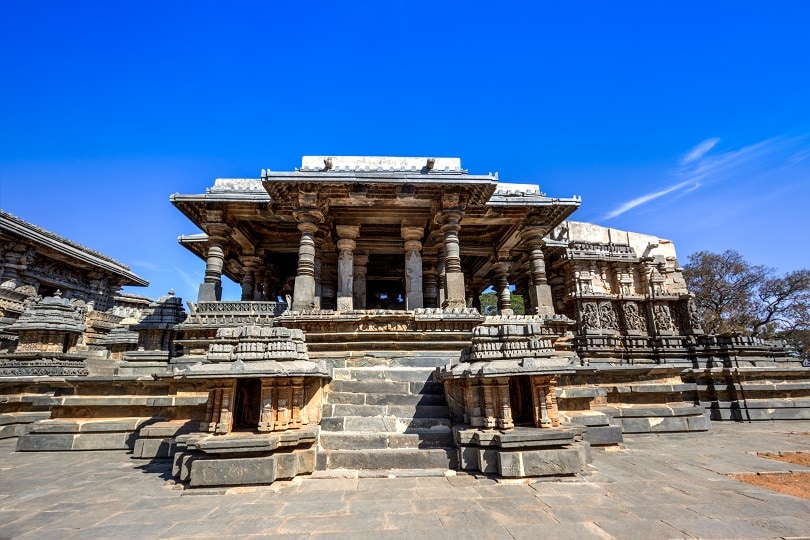
Have you ever dreamt of returning to the older times? Where kings, castles and fairytales were the norm and picturesque mansions dotted the country side? Or maybe you want to see a city in ruins which once stood out as a great kingdom? In any case, Halebidu, regal capital city of the Hoysala Empire, is going to capture both your mind and soul as you lose yourself in the age old kingdom’s every working nook and cranny as you look for the mystery that you came for.
The sprawling temples which capture the heart of any architect, are found in abundance and will keep you searching for more. The amazing architecture of the city and kingdom is the perfect vacation for any architect or an archeologist. Recently, after the year 2000 as UNESCO moved to protect monuments and commemorate them, Halebidu was also declared a UNESCO World Heritagesite. And when you reach the place you will see that there were good reasons for doing so as the enthralling city keeps your imagination vividly occupied for a long stretch of time.
When and how to go
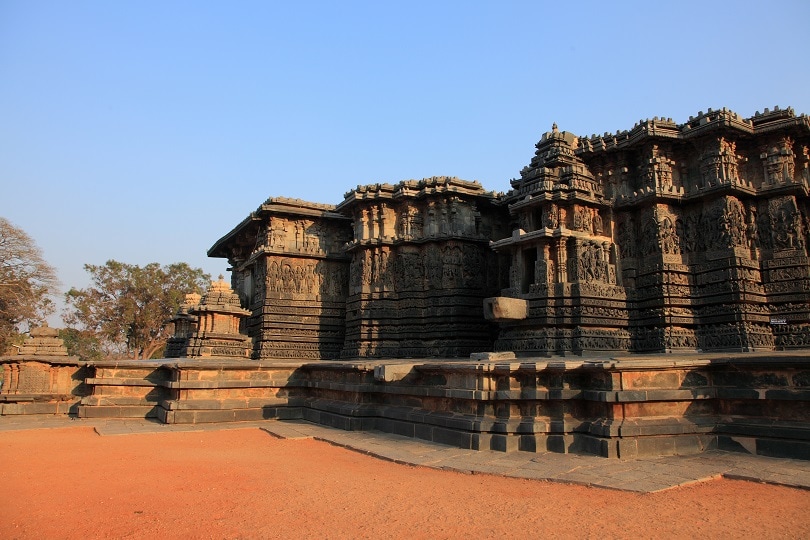
You can go to Halebidu whenever you want. It is open all year round. But the ideal time to visit this place is around the months of October to February. There is a festival called Hoysala Mahotsava during March which can also be a good incentive to visit the place. The other eminent festivals of this region are Mahashivaratri and Diwali, both of which make for splendid viewing and completely light up the age old city.
The nearest railhead to the city is the Hassan Railway station situated about 27 km away. The tourists who wish to stay overnight, find a place here and commute to the old city. The nearest airport is the Mangalore airport situated at a distance of 168 km from where one can get taxis to reach Halebidu. The city of Halebidu is also well connected with all the nearby major cities through bus services which ply every day, making it convenient for the travelers to reach the city anytime they want.
Primary attraction of the Old City
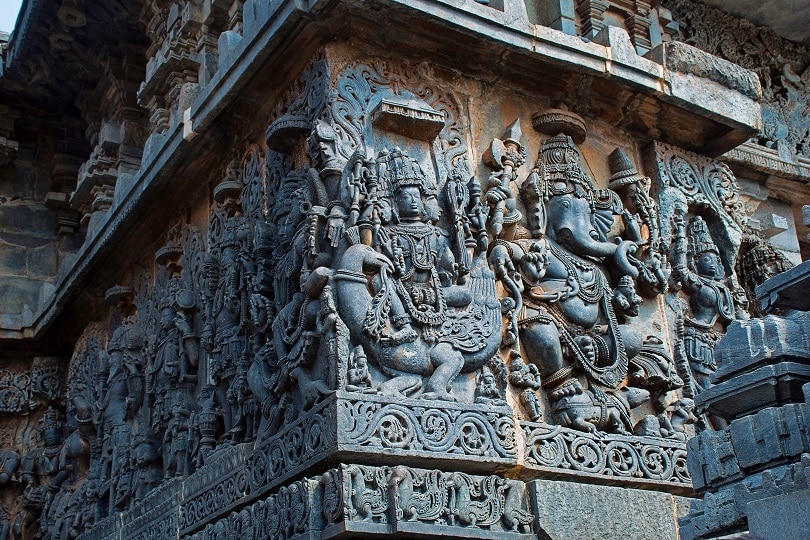
The most important aspect about the Old city which keeps attracting tourists from all over the world is the immensely detailed and high quality architecture displayed here. The fact that the city still stands on its base, in spite of being turned to ruins over the course of time, speaks highly of the quality of the architecture of the period. To top it all off, the mesmerizing temples, which were a staple of this town, make for an amazing spectacle. One salient feature of all the temples of the Hoysala Empire is the ‘manatapa’ which is a prayer hall which used to swarm with devotees during the time of religious festivals and occasions.
The ‘manatapa’ used to be present in all of the temples of the empire and is one of the primary attractions for the tourists. The great halls of the temple along with their architecture, serenity and spirituality make for a major attraction as the temples present an opportunity for the visiting tourists to experience the grandeur of the Hoysala Empire in its full glory.
Fairs and festivals
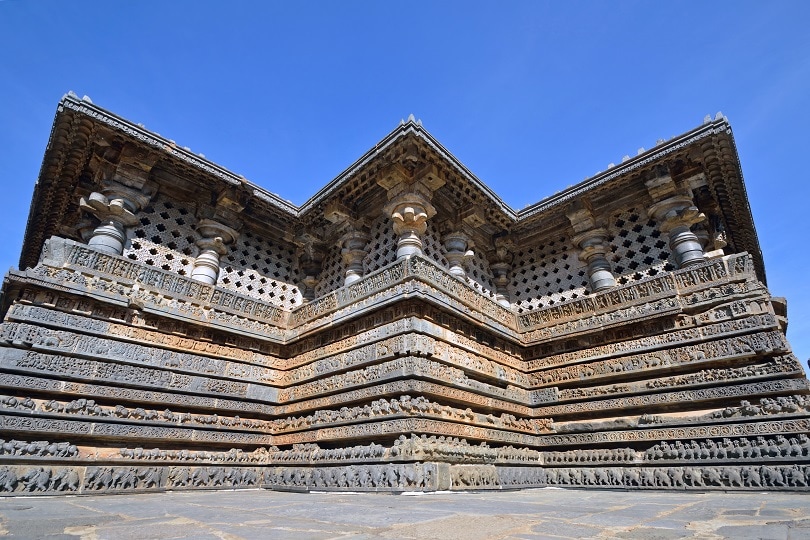
Not a huge number of festivals are celebrated in this city presently. The eminent festival of this region is the Mahamastakabhisheka which is celebrated centering on a 17 m high statue of Lord Bahubali in his Gomateshwar form. The festival is celebrated once every twelve years. And thus after the long wait is over, there is huge pomp and grandeur around the festival. The huge statue is smeared with coconut oil, yoghurts, poppy seeds, jaggery, ghee, almonds, dates, bananas etc. Incidentally this statue is considered to be the tallest monolithic structure in the entire world.
5 Things to do at Old City – Halebidu, Karnataka
- Hoysaleshwara Temple
- Belur
- Yagachi Dam
- Basadi Halli
- Nandimantapa
- Kedareshwara Temple
1. Hoysaleshwara Temple

The magnificent temple derives its name from the eminent Hoysala king Vishnuvardhana Hoysaleshwara. This is one of the most prominent shrines dedicated to Lord Shiva. This temple in South India is a traditional Dvikuta Vimala which means that it has two main buildings which are named after the king and the queen Shantala Devi (Shantaleswara). The architecture and statues are the primary attractions of the temple.
2. Belur
Belur and Halebidu are considered to be the two crown jewels of ‘the Indian cultural heritage’ situated in Karnataka. Known worldwide for its expert craftsmanship and exquisite artworks, this place is worth a visit to feel proud of ancient India.
3. Yagachi Dam
This dam is situated a little way off from Belur. But the dam itself is not of any such importance. It’s the accompanying water sports facilities that draw in a considerable number of tourists annually.
4. Basadi Halli
This place is known for the astute Jain temples which are architectural wonders of their own. The pillars of these temples are polished so well that they resemble mirrors at times. This is a great spectacle and a memoir to the excellence of ancient Indian architecture.
5. Nandimantapa
This is the mantapa situated just in front of the Hoysaleswara temple. The mantapa also has a shrine of Surya which houses a 2 m tall figurine of the deity. The Parswanatha Halli with polished pillars is a prime attraction which shows distorted reflections of the onlookers.
6. Kedareshwara Temple
This was the first temple in the Hoysala reign which was built by a woman, namely Ballala II’s queen, Ketaladevi. The temple is a site to behold in all its glory.
Museum of Archeological Survey of India
This Museum is situated in the primary temple premises. This museum displays coins, idols, figurines and anything and everything of historical or cultural importance from the Hoysala reign.

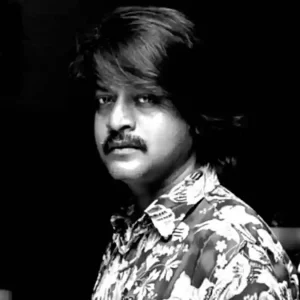
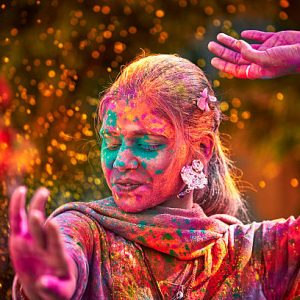




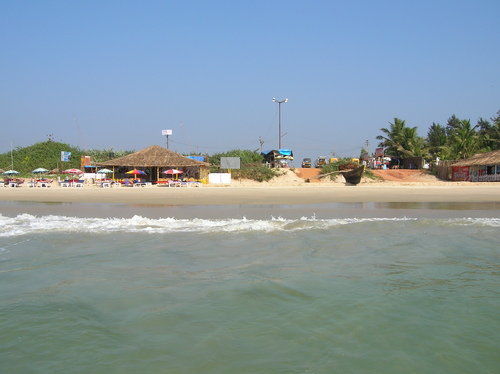
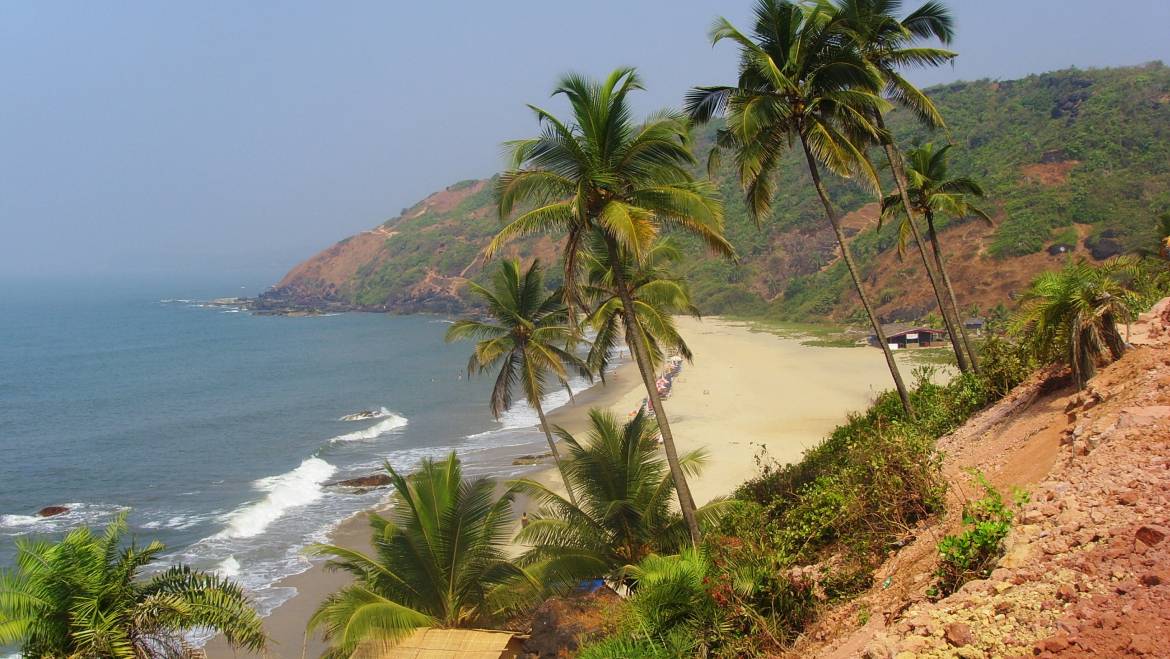
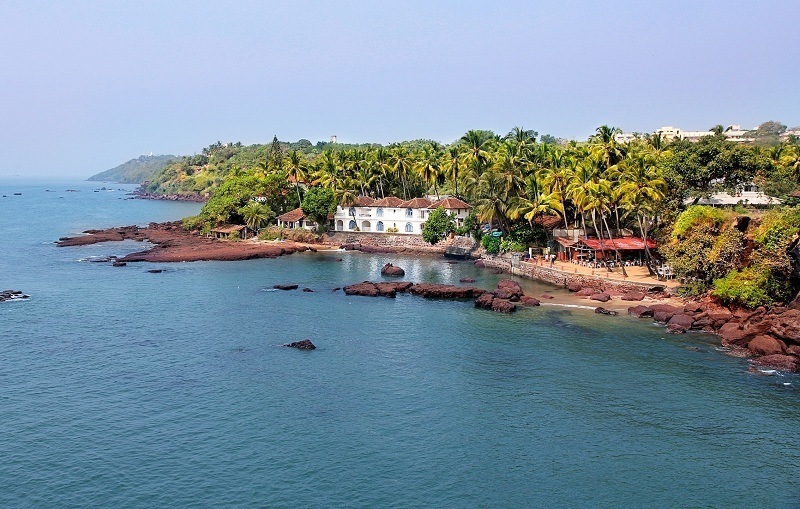

5 Comments
Comments are closed.